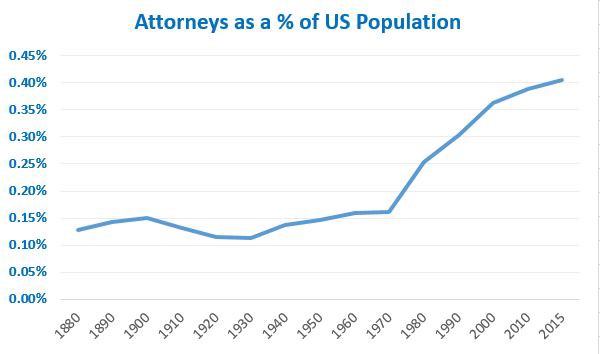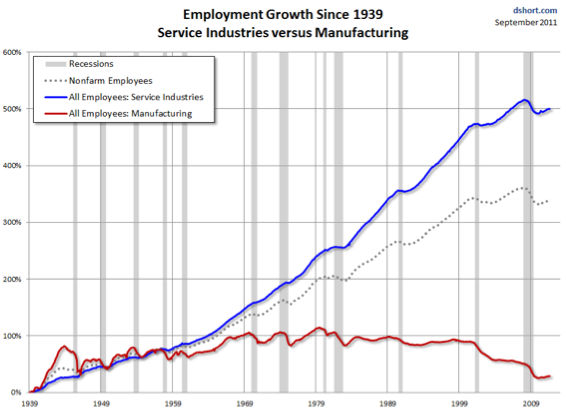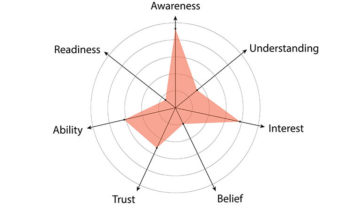It’s Harder than Ever to Sell Professional Services

The world of professional services is increasingly noisy and cluttered.
The history of selling professional services can be neatly divided into two periods: Pre-1977 and everything after. I’m 99% certain nearly all of you reading this have never heard of John Bates. Or, the 1977 Supreme Court case of Bates v. State Bar of Arizona. Let me explain. For nearly 100 years prior to 1977, professional associations (such as accounting, law, medicine, etc.) erected stringent rules against commercial behavior. In three professions — accounting, actuarial, and law — an absolute prohibition existed against anything resembling selling activity. On the claim of the violation of free speech, the Supreme Court in 1977 ruled in favor of Bates and O’Steen, stating that Arizona’s ban on advertising, “Inhibit[ed] the free flow of information and ke[pt] the public in ignorance.” The Supreme Court t, therefore, moved the ban on advertising in law.
The Bates ruling changed everything in the fields of professional services. Prior to the ruling, marketing of professional services took place on the golf course or over drinks after work: the ‘good ol’ boys’ network. This tidy little system made sure that prices stayed relatively high and uniform — a gentlemen’s agreement on what to charge clients for services rendered. When Bates and O’Steen came along, fresh out of Arizona State University law school, they began advertising a low, flat rate for straightforward legal services such as wills, setting up corporate entities, etc. Bates and O’Steen were smart and hungry, eager to get their legal careers off the ground. Unfortunately, the good ol’ boy network didn’t take very kindly to their approach — which was viewed as unseemly and in poor taste. Professionals didn’t advertise or sell! Work was based on who you knew and prices were never discussed. Nowadays, every accounting firm, architect, attorney and web developer advertises and sells, too.
Even if they don’t call it such. In fact, in a recent interview with my co-author, Tom McMakin, Dominic Barton, CEO of McKinsey, offered this:
If I were to use the word sales, I would get hauled up before our professional conduct committee.
Adding to the growth in advertising and sales for consulting and professional services, we also have had a significant increase in the number of individuals providing those services. Ergo, there is more competition. For example, as you’ll see in the following graph, the number of attorneys relative to our U.S. population remained steady for nearly 100 years from 1880 to about 1970. Since 1970, the number of attorneys in the U.S. has more than tripled as a percent of our population.

The number of attorneys relative to the U.S. population has tripled since 1970.
Taking a look at the services industries as a whole, the next graph shows the cumulative growth of the service sector of the economy versus manufacturing since 1939. Not too surprising, right?

Since 1960, service jobs have come to dominate our economy.
The gap between employment in the manufacturing sector of the economy and services began to spread in the 1960s. Now, this includes all services — not just consulting and professional services, but I think it’s fairly safe to say that the competition among all service providers has increased significantly over the past 50 years. Judging from the number of billboards in my town for doctors and lawyers, I think it’s a sure bet there is more competition now than a few decades ago.
Let’s take a look at a quote by Jack Trout, a leading marketing expert and co-author of positioning theory.
The typical consumer is overwhelmed with unwanted advertising and has a natural tendency to discard all information that does not immediately find an empty slot in the mind.
When do you think Mr. Trout made this claim? 2015? 2010? 2000? 1990? Would you believe 1969? Even before the era of smartphones, the internet, email, social media, or the 24/7 news cycle, we were already overwhelmed with “too much noise.” Fast forward 50 years and every living consumer in Western society is numb from the unmitigated onslaught of advertising messages.
When Jack Trout first made the preceding claim, the average American consumer was exposed to about 500 ads a day. By the early 2000s, this number had grown to an estimated 5,000 ad messages a day. Today, marketing experts estimate that many among us are exposed to as many as 10,000 ads per day.
I can’t help but be incredulous. Really—5,000 to 10,000 ads a day? Even at 500, I think my brain would hurt. Independent of the actual figures, I think we can all agree that we are overwhelmed with unwanted advertising. At some point, advertising becomes meaningless background noise.
Seth Godin, another marketing expert and the author of several bestsellers including Purple Cow, offered this observation:
As marketers, we know the old stuff isn’t working. And we know why: because as consumers, we’re too busy to pay attention to advertising, but we’re desperate to find good stuff that solves our problems.
Okay, how are you feeling now? Ready to go out and win some new clients? Frankly, the thought of it all is a bit overwhelming to many of us. I’m a bit more optimistic. Because in this sea of nonsense lies a great opportunity for those that understand how clients today actually buy consulting and professional services. But, we’ll have to wait a bit longer for that. Next up is our fifth and final obstacle: everything you’ve ever been taught about sales is wrong.




